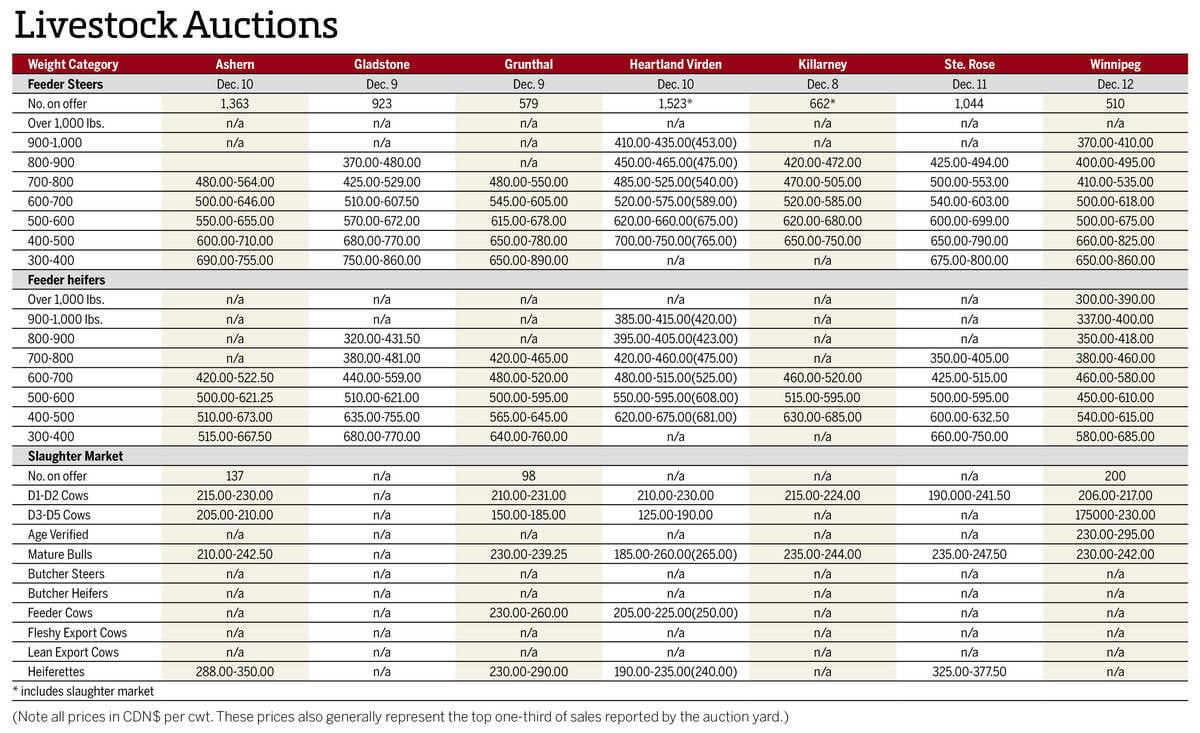Over the past two weeks, Canadian canola prices added more than $40 per tonne on the Intercontinental Exchange, providing an early holiday gift for producers.
Statistics Canada cut its 2024-25 canola production estimate to 17.8 million tonnes in its principal field crop report on Dec. 5, down from 19.2 million the year before. Five days later, the United States Department of Agriculture cut its production estimate for Canadian canola to a still-bearish figure of 18.8 million tonnes. The department also tightened its estimate for global canola/rapeseed ending stocks by 2.92 million tonnes at 7.19 million.
Meanwhile, European rapeseed hit its highest prices in four weeks on Dec. 12 and Chicago soyoil rose as well. The Canadian dollar also dropped to its lowest point since the early days of the COVID-19 pandemic, barely staying above the 70 U.S. cent mark. The Bank of Canada cut its key interest rate by 50 basis points on Dec. 11.
Read Also

Manitoba cattle prices Dec. 16
Here’s what local farmers were getting paid last week for their cattle at Manitoba livestock auction marts; prices covering the week Dec. 8-12, 2025.
All those factors contributed to canola’s rise, but how long will it last? The rally came to an end Dec. 12 with contracts losing $1.20 to $3.50 per tonne, which may be either a brief correction or the start of a decline.
The January and March canola contracts surpassed their 100-day moving averages, but faced a wall when it came to the 50-day ($623 and $634/tonne, respectively). A similar occurrence happened to January soyoil, when it began to decline once it approached its 50-day average at 43.71 U.S. cents per pound. The funds have also added to their short position in canola and reduced their net long in soyoil.
Brazil’s upcoming soybean crop is officially forecast at 166 million to 169 million tonnes, but some analysts believe the figures could be underestimated. The Rosario Grain Exchange raised its figure for Argentina’s crop by one million tonnes at 52 million. A bumper South American crop will pull soybeans and soyoil down further.
This is not to mention the tariffs proposed by U.S. President-elect Donald Trump and what they would mean for trade flows.
Just like the temperatures, it appears canola is starting to cool off.
















